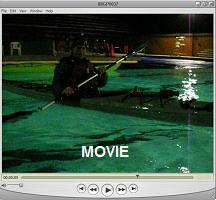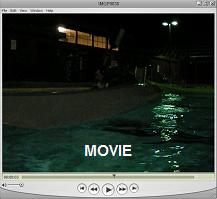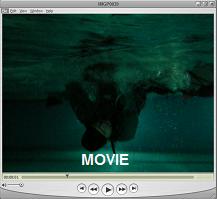I have to do a presentation for my Japanese class next week, and I decided to do it on Halloween.
来週プレゼンテーションさせる。ハロウィーンの事にする。
-------------------------------------------------
Halloween originated as a Pagan festival among the Celts of Ireland and Great Britain.
ハロウィーンはアイアランドとグレートブリテンのケルト人から来ました。
The term Halloween, is shortened from All-hallow-eve, as it is the evening before "All Hallows' Day" (also known as "All Saints' Day").
ハロウィーンと言う言葉は短縮形です。“All-hallow-eve”の話から来ました。”Hallow”と言うケルト語の言葉は英吾で“Saint”です。ハロウィーンは“All Saint Day”の前夜です。
But, in the 5th century BC, in Celtic Ireland, summer officially ended on October 31. The holiday was called Samhain (pronounced sow-en), the Celtic New year.
紀元前5世紀にケルトのアイアランドの新年は11月1日でした。ケルトの新年は“Samhain (sow-en)“と言いました。
One story says that, on that day, the disembodied spirits of all those who had died throughout the preceding year would come back in search of living bodies to possess for the next year.
その日去年の死んだ死者の亡霊は生きている人の体を捜していると考えられていました。
もちろん、生きている人は手に入れたくなかったです。ですから、10月31日の晩に人々は死者の亡霊を怖がらせて追い払うために恐ろしい衣装を着て、大声で市をパレードします。
Pumpkin/パンプキンのこと
 The custom of Pumpking lanterns probably comes from Irish folklore. There was a man named Jack, and he was a bad person. He was always drinking and creating mischief. Once, he even played some mischief on the devil.
The custom of Pumpking lanterns probably comes from Irish folklore. There was a man named Jack, and he was a bad person. He was always drinking and creating mischief. Once, he even played some mischief on the devil.
ハロウィーンのカボチャのちょうちんの吉例はアイアランドの民間伝承から来たでしょう。Jackと言う人はだめな人でした。いつも飲んだり、詐欺師したり、しました。デビルも詐欺師しました。
When he died, he was not allowed into heaven because he was bad. But he was also not allowed into hell because he tricked the Devil. Instead, the devil gave Jack a single ember to provide light, which was put inside a hollowed out turnip to protect it from the wind.
死んだとき、悪い人なのでヘブンに入られませんでした。でもデビルを詐欺師したのでヘルも入られませんでした。その代り,デビルは種火をあげて、風から保護するためにくりぬいたカブに入れました。
When the custom came to America, they started using Pumpkins for Jack-O-Lanterns, which were much more available than turnips.
アメリカに来たとき、パンプキンのほうが多いなのでJackさんの灯籠にはパンプキンを使います。
“Trick or Treat”
In the middle ages, people were doing somethingc alled “Soulings”. Poor people would go around and beg for food in exchange for praying for the people who gave the food.
中世のときSoulingしました。貧乏な人は家に食べ物と交換に死者に祈りをささげてあげます。
Over time, the beggars turned into children, who would beg for things like money, apples, and buns.
時間がたてば、カスタムが変えられました。子どもは乞食になりました。お金やりんごやパンをねだっていました。
During the Pioneer days of the American West, the housewives would give the children candy to keep from being tricked. The children would shout "Trick or Treat!" The "trick" part of "trick or treat" was a threat to prank.
アメリカに主婦はお菓子をくれるといたずらしません。子どもは“Trick or Treat”を叫びます。
Labels: Interesting Stuff
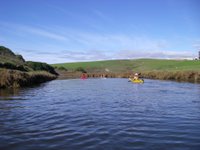 Went kayaking last weekend with our friends Janet and Brian (who we have done a bunch of trips with in the past). We went to a place called Estero Americano, which is north of Tomales Bay, where we went kayak camping a few months ago.
Went kayaking last weekend with our friends Janet and Brian (who we have done a bunch of trips with in the past). We went to a place called Estero Americano, which is north of Tomales Bay, where we went kayak camping a few months ago. 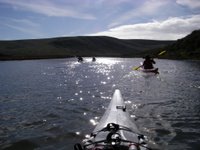 I was bad. I didn't want to get wet and cold, so did not practice my Eskimo rolls.
I was bad. I didn't want to get wet and cold, so did not practice my Eskimo rolls.